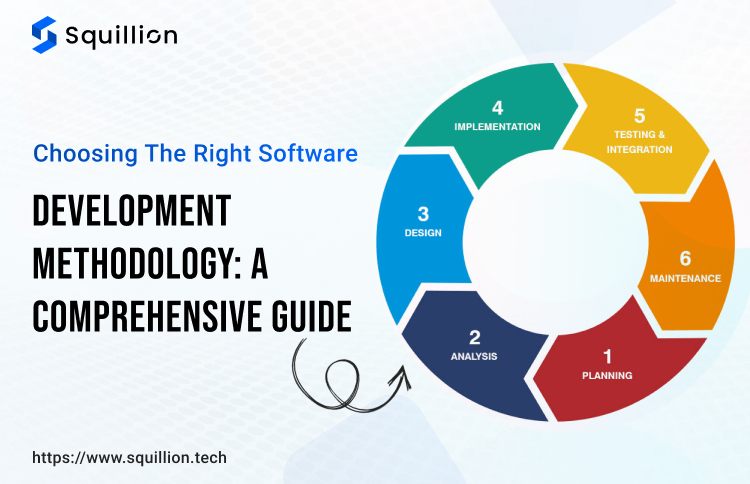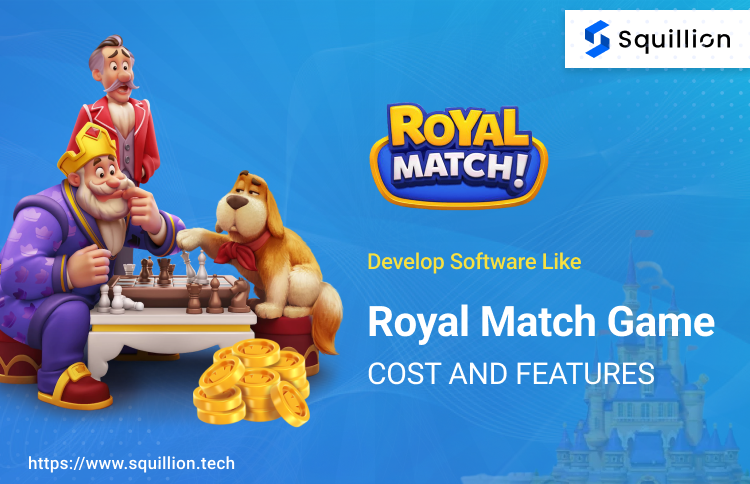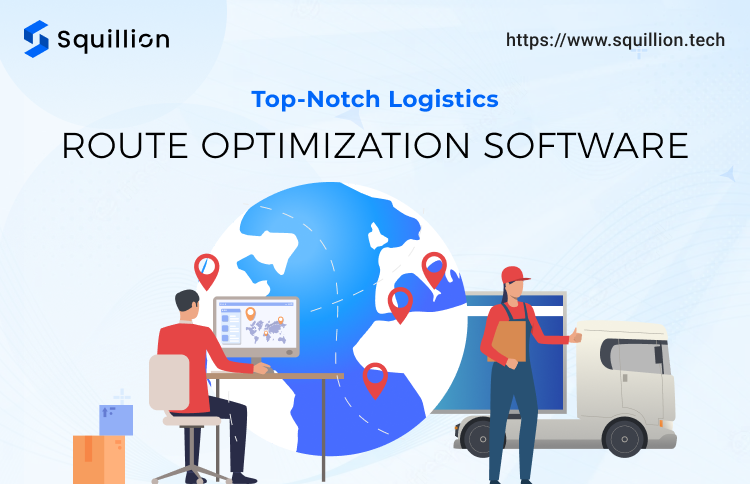Did you know that the success of your software development project can hinge on a single decision? That’s right, the methodology you choose can be a game-changer. It’s akin to choosing between a well-paved highway or a winding country road for a journey. Both will lead you to your destination, but the experiences and challenges along the way can vary significantly.
The right choice can pave the way for a smooth, efficient journey, culminating in a successful outcome. Conversely, the wrong choice might lead you down a path filled with delays, cost overruns, and a final product that doesn’t meet the intended specifications.
You might now be wondering, ‘How do I choose the right path?’ That’s the exact problem we’re going to tackle in this comprehensive guide. We’ll journey through the diverse landscape of software development methodologies, dissecting their strengths and weaknesses. By the end of this post, you’ll be equipped with a roadmap to confidently navigate your next software development project.
So, are you ready to eliminate the guesswork from choosing a software development methodology? Let’s dive in and chart the course for a successful journey!
What Is a Software Development Methodology?
Think of a software development methodology as a blueprint for constructing a building. It’s a comprehensive plan that outlines the steps to be taken, the sequence in which they should be executed, and the resources required for each phase. Without a well-defined blueprint, the construction process can become chaotic, leading to delays, cost overruns, and a building that doesn’t meet the intended specifications.
The Role of a Software Development Methodology in the Software Development Life Cycle
A software methodology is a structured framework that guides the software development life cycle phases. It is also termed as Software Development Life Cycle (SDLC). It’s like a roadmap outlining the stages from the initial concept to the conclusive deployment of the software.
The methodology helps manage the complexity of the system development life cycle. It provides clarity on tasks, timelines, and resources, ensuring all team members are aligned. This reduces errors and increases efficiency.
Furthermore, the methodology provides a framework for managing risks and changes during development. It helps ensure the final product meets the intended specifications and that the project stays within the defined timeline and budget.
Different methodologies offer different approaches, each with unique advantages and disadvantages. Therefore, choosing the right software development model is a crucial decision that can immensely impact the project’s success.
The Impact of Choosing the Right Software Development Methodology
Selecting the right software development methodology is akin to choosing the perfect blueprint for constructing a building. Each methodology, like a unique blueprint, offers a distinct approach to the software development process. The methodology you choose can significantly influence the efficiency of the software development life cycle, the standard of the final software product, and the project’s overall success.
The right methodology can streamline the software development process, making it more efficient and effective. It can help manage risks, facilitate better communication among team members, and ensure the project stays on track with its timeline and budget.
On the other hand, choosing an ill-suited methodology can lead to miscommunication, delays, cost overruns, and a final product that doesn’t meet the intended specifications. Therefore, the choice of a software development methodology is not just a decision—it’s a strategic move that can make or break your software development project.
In essence, the right software methodology can be a powerful tool that drives the project toward success, while the wrong one can steer it off course. Hence, understanding the nuances of different software development methodologies is crucial in making an informed decision.
Different Types of Software Development Methodologies
There are numerous software development methodologies, each with its unique approach to the software development life cycle. Let’s explore some of the most popular ones:
Agile Software Development Methodology
Agile is a versatile and iterative approach to software development. It emphasizes collaboration, meeting customer expectations, and small, rapid releases. Also, it was used to develop project management software, Jira. Agile is ideal for projects with dynamic requirements and a fast-paced development environment.
Pros:
- Ensures high product quality through continuous testing and integration.
- Boosts customer joy by involving the client in every step of the development process.
- Minimizes risks by detecting and addressing errors at an early stage.
Cons:
- May lead to a lack of comprehensive documentation due to its iterative nature.
- Might not be the best fit for small-scale projects due to resource and time requirements.
- Requires a team with significant experience in Agile methodologies for effective implementation.
Waterfall Development Methodology
Waterfall adopts a straightforward and sequential approach to software development. Each project phase must be completed before the next phase can begin. It is best suited for projects with clearly outlined prerequisites and a stable product definition.
Pros:
- Provides a clear and easy-to-understand process.
- Establishes clear project objectives from the start.
- Ensures a well-documented process throughout the project lifecycle.
Cons:
- Makes it difficult to implement changes once the project has started.
- Not suitable for complex or undefined projects.
- Tends to have longer delivery times compared to other methodologies.
Extreme Programming Method
Extreme Programming (XP) is an Agile-based approach that prioritizes client contentment. It advocates for regular ‘releases’ in brief development cycles to enhance efficiency and establish milestones for incorporating new client needs.
Pros:
- Prioritizes customer delight through continuous delivery.
- Ensures high-quality software through rigorous testing.
- Offers flexibility to accommodate changing requirements.
Cons:
- Requires significant customer and developer involvement.
- May lead to a lack of comprehensive documentation.
- Not suitable for small teams due to its collaborative nature.
Lean Development
Lean software development is an iterative methodology that focuses on the efficiency of resources and the elimination of waste. It emphasizes delivering the most value to the customer with the least resources.
Pros:
- Focuses on delivering exceptional software.
- Promotes efficient use of resources and elimination of waste.
- Prioritizes delivering customer value.
Cons:
- Requires a deep understanding of lean principles.
- Not suitable for complex projects due to its minimalist approach.
- Requires a high level of discipline and commitment from the crew.
Prototyping Methodology
The Prototyping Methodology is a software development process where a prototype (an early approximation of a final system or product) is built, tested, and reworked as necessary until a satisfactory prototype is achieved.
Pros:
- Boosts client approval through rapid prototyping and feedback.
- Allows for early detection and rectification of errors.
- Offers flexibility to accommodate changing requirements.
Cons:
- Can lead to scope creep if not properly managed.
- Can be more expensive due to iterative development and revisions.
- Requires significant customer involvement and feedback.
Dynamic Systems Development Method
The Dynamic Systems Development Method (DSDM) represents an Agile approach that gives precedence to scope, functionality, and timelines. DSDM follows a repetitive and progressive strategy that underscores the importance of ongoing user participation.
Pros:
- Gives precedence to user happiness via constant participation.
- Offers flexibility to accommodate changing requirements.
- Ensures first-rate software through iterative development.
Cons:
- Requires experienced team members for effective implementation.
- Not suitable for small projects due to its comprehensive nature.
- Requires significant customer involvement and feedback.
Feature Driven Development
Feature Driven Development (FDD) is an iterative and incremental software methodology that follows a model-driven approach. It focuses on developing features, which are small pieces of client-valued functionality.
Pros:
- Delivers premium software through a model-driven approach.
- Promotes efficient use of resources by focusing on feature development.
- Provides clear project progress through measurable features.
Cons:
- Requires experienced team members for effective implementation.
- Not suitable for small projects due to its feature-centric approach.
- Requires a deep understanding of the model-driven approach.
Rational Unified Process
The Rational Unified Process (RUP) is a cyclical software development methodology that offers a structured method for distributing tasks and roles within a software development team.
Pros:
- Ensures top-notch software through a disciplined approach.
- Promotes efficient use of resources by assigning clear tasks and responsibilities.
- Provides clear project progress through measurable milestones.
Cons:
- Can be complex to implement due to its structured nature.
- Requires experienced team members for effective implementation.
- Can be more high-priced due to its comprehensive and disciplined approach.
Spiral Development Model
The Spiral Model is a software development strategy guided by risk management principles, with a strong emphasis on early detection and mitigation of project risks. It is a combination of iterative development and the systematic aspects of the waterfall model
Pros:
- Delivers high-grade software through a risk-driven approach.
- Promotes efficient use of resources by focusing on early risk identification and reduction.
- Offers flexibility to accommodate changing requirements.
Cons:
- Can be complex to implement due to its risk-centric nature.
- Requires experienced team members for effective implementation.
- Can be more costly due to its focus on risk management.
Joint Application Development
Joint Application Development (JAD) is a methodology involving the client or end-user in designing and developing an application. It provides a structured and disciplined environment where users, managers, and developers work together to define requirements for the system.
Pros:
- Promotes consumer gratification through direct involvement.
- Delivers top-quality software through a collaborative approach.
- Promotes efficient use of resources by involving users, managers, and developers.
Cons:
- Requires significant customer and developer involvement.
- Not suitable for small projects due to its collaborative nature.
- Requires experienced team members for effective implementation.
Scrum Development
Scrum is an Agile approach that emphasizes the management and regulation of projects with iterative and incremental stages. It facilitates the swift delivery of top-notch software and adopts a business strategy that harmonizes development with customers’ requirements and organizational objectives.
Pros:
- Ensures high product quality through iterative development and testing.
- Increases client fulfillment by ensuring their active participation in every phase of development.
- Minimizes risks by detecting and addressing errors at an early stage.
Cons:
- Requires experienced team members for effective implementation.
- Not suitable for small projects due to its collaborative nature.
- Requires significant client and developer involvement.
Rapid Application Development
Rapid Application Development (RAD) is a software development methodology prioritizes swift prototyping over extensive pre-planning. It allows for flexible and fast development and testing.
Pros:
- Enhances consumer satisfaction through rapid prototyping and feedback.
- Delivers supreme software through iterative development and testing.
- Offers flexibility to accommodate changing requirements.
Cons:
- Can lead to scope creep if not properly managed.
- Can be more pricey due to rapid development and revisions.
- Requires significant customer involvement and feedback.
DevOps Method
DevOps represents a collection of methodologies that merge software development with IT operations. Its goal is to reduce the duration of the systems development life cycle while ensuring a steady delivery of superior software.
Pros:
- Quick identification and resolution of bugs due to automated testing.
- Promotes efficient use of resources by combining software development and IT operations.
- Enhances customer satisfaction through rapid delivery.
Cons:
- Requires experienced team members for effective implementation.
- Can be complex to implement due to its comprehensive nature.
- Requires a strong commitment and disciplined approach from the team.
Our Approach to Work at Squillion Technology
At Squillion Technology, we understand that each project is unique and requires a tailored approach. That’s why we don’t adhere strictly to one methodology. Instead, we use a combination of methodologies, choosing the best aspects of each to create a customized approach that best suits the project’s needs.
We believe in flexibility, adaptability, and continuous improvement. We engage in a collaborative process with our clients, gaining a deep understanding of their requirements and expectations. Our commitment is to deliver superior software that fulfills our client’s needs and surpasses their anticipations.
Consider Squillion Technology Your Reliable Partner for Software Development
Choosing the right software methodology is paramount, but it’s just one piece of the puzzle. You also need a reliable partner who understands your requirements, shares your vision, and has the expertise to bring your ideas to life.
That’s where Squillion Technology comes in. With our extensive experience in software development, our team of skilled engineers, and our commitment to excellence, we are the perfect partner for your software development needs.
Whether you’re looking to develop a new software product, improve an existing one, or need advice on choosing the right methodology, we’re here to help. We provide a vast array of services encompassing everything from web to mobile app development, and we’re perpetually prepared to embrace new challenges.
Decoding the Software Development Methodology Enigma: Your Key to Success
As we’ve journeyed through the diverse landscape of software development methodologies, we’ve seen how each offers unique advantages and challenges. From the flexibility of Agile to the structured approach of Waterfall, the choice of methodology can significantly influence the trajectory of your software development project.
At Squillion Technology, we understand that there’s no one-size-fits-all solution. Each project is unique, and the right methodology is the one that aligns best with your project’s needs, your team’s skills, and your organization’s culture. That’s why we blend the best aspects of various methodologies to create a customized approach for each project.
Drawing from the wisdom of Steve Jobs, we find that “Innovation distinguishes between a leader and a follower.” So, let’s innovate together. Let’s lead the way to success in your software development journey. Contact us today, and let’s start building something remarkable together!
Remember, the choice of a software development methodology isn’t just a decision—it’s a strategic move that can make or break your project. So, choose wisely, choose strategically, and let’s create software that makes a difference!”





